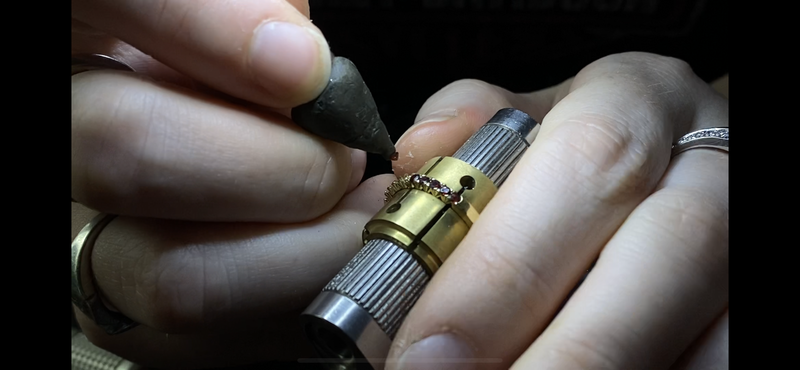Diamond setter

Diamond setter
A diamond setter specializes in setting diamonds in precious metals. This is specialist work that not every goldsmith can do and that is why many goldsmiths (just like watch technicians) outsource this work to specialists. Setting diamonds and other precious stones in watches and jewelery is specialist work.
What a diamond setter does
A diamond setter not only sets diamonds and other precious stones, but also provides, for example, the maintenance of jewelery and watches with diamonds. For example, by removing the diamonds from the jewel or watch to replace them after maintenance, repair or renovation. It may be necessary to rhodium the jewel or watch in question after the removal of a diamond. This means that the diamond setter applies a layer of Rhodium in order to make the diamond stand out even better in the watch or piece of jewellery.
Techniques of a diamond setter
When setting diamonds, a diamond setter uses various setting techniques. For example, the type of setting should be strong, for example if a piece of jewelery with diamonds is worn every day. Think of a wedding ring that contains a diamond and that you wear every day. Polishing jewelry is also part of the work of a diamond setter. This also applies to repairing or replacing a setting, for example if it has broken off. Considering the specialist work in combination with the manual work, a diamond setter can be seen as a craftswoman. A lot of experience is needed to perform this specialist work in a perfect way. A diamond setter uses a variety of hand tools, just like a microscope to set diamonds perfectly. The work is in the higher segment of jewelry and watches and that obviously has to do with the value of the stone. It is also possible that a diamond setter is engaged in making new work.
The different types of settings
A diamond setter can apply different settings, such as in a ring. The type of setting determines, among other things, the appearance of the gemstone or piece of jewelry. The settlement also influences the degree of protection and the degree of maintenance. A chaton setting is an example of a setting that is often used. In this way, the diamond can reflect plenty of light. There is also a shared chaton setting by pinning multiple diamonds/stones with grains. Another example concerns the halo setting, where small stones are placed around the main center stone. With a smooth conversion, the gemstone is completely enclosed and optimally protected. There is also a variant with a semi-smooth conversion, where more light falls on the stone. A cathedral setting is a setting in the shape of a Gothic cathedral. A diamond setter can also apply a rail setting by placing all the stones next to each other in the ring. There are even more settings, varying from a rubbing setting to a pavé setting or French pavé setting.
The tasks of a diamond setter
In short, the tasks of a diamond setter are:
- Setting diamonds
- Set gems
- Polishing
- Rhodium
- To repair
- Maintenance
- To change parts
- Apply setting techniques
Certified diamond setter
There are specialist training courses for diamond setters. For example, I successfully completed the Alexandre Diamond Setting School in Antwerp, which makes me a certified expert at the highest level of diamond setting.